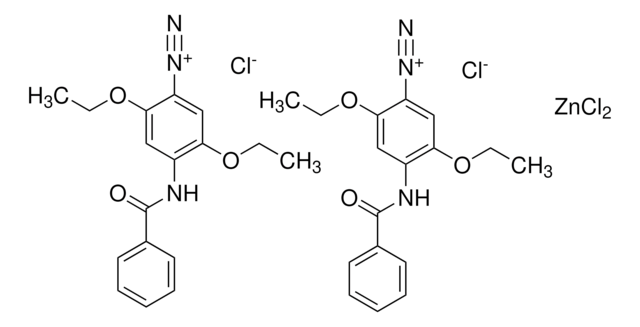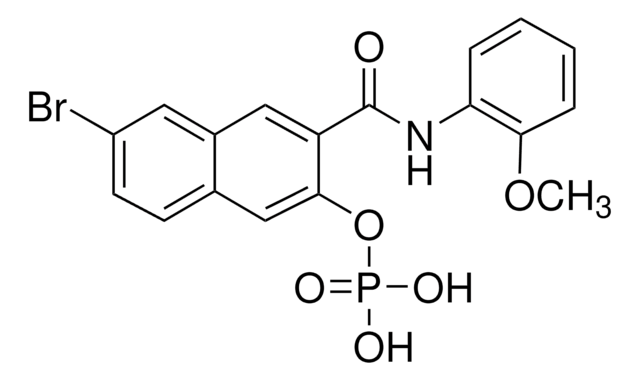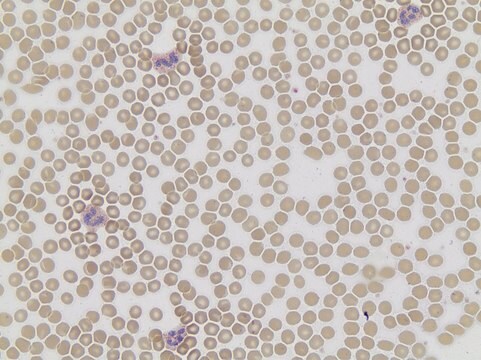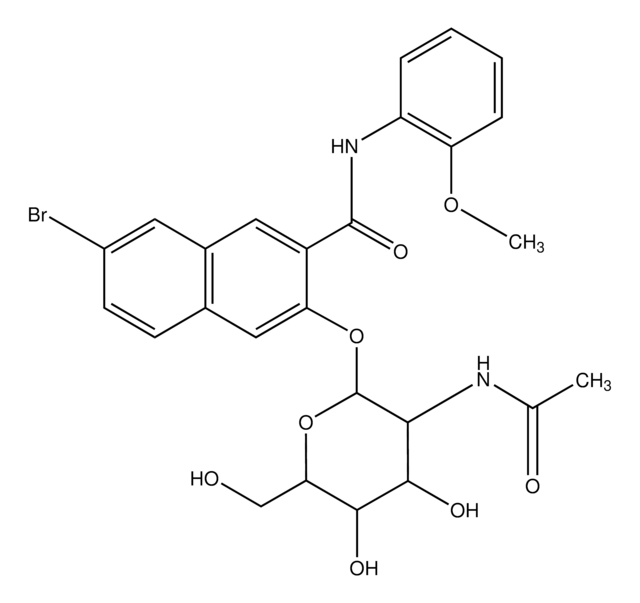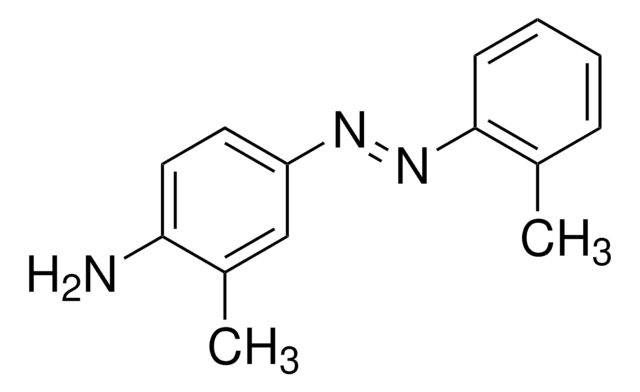N2125
Naphthol AS-BI phosphate
≥98% purity (HPLC), powder
Synonym(s):
7-Bromo-3-hydroxy-2-naphthoic-o-anisidide phosphate
About This Item
Recommended Products
product name
Naphthol AS-BI phosphate, ≥98% (HPLC), Technical grade
Quality Level
assay
≥98% (HPLC)
form
powder
technique(s)
microbe id | staining: suitable
color
white to light yellow
solubility
methanol: 50 mg/mL
application(s)
diagnostic assay manufacturing
hematology
histology
storage temp.
−20°C
SMILES string
COc1ccccc1NC(=O)c2cc3cc(Br)ccc3cc2OP(O)(O)=O
InChI
1S/C18H15BrNO6P/c1-25-16-5-3-2-4-15(16)20-18(21)14-9-12-8-13(19)7-6-11(12)10-17(14)26-27(22,23)24/h2-10H,1H3,(H,20,21)(H2,22,23,24)
InChI key
HUXIAXQSTATULQ-UHFFFAOYSA-N
Looking for similar products? Visit Product Comparison Guide
General description
Application
- in tartrate-resistant acid phosphatase (TRAP) staining to detect osteoclast activity
- as a component in Tris-HCl in staining cells to measure alkaline phosphatase (ALP) activity
- to perform alkaline phosphatase reaction
Biochem/physiol Actions
Substrates
Storage Class
11 - Combustible Solids
wgk_germany
WGK 3
flash_point_f
Not applicable
flash_point_c
Not applicable
ppe
dust mask type N95 (US), Eyeshields, Gloves
Choose from one of the most recent versions:
Already Own This Product?
Find documentation for the products that you have recently purchased in the Document Library.
Customers Also Viewed
Our team of scientists has experience in all areas of research including Life Science, Material Science, Chemical Synthesis, Chromatography, Analytical and many others.
Contact Technical Service

